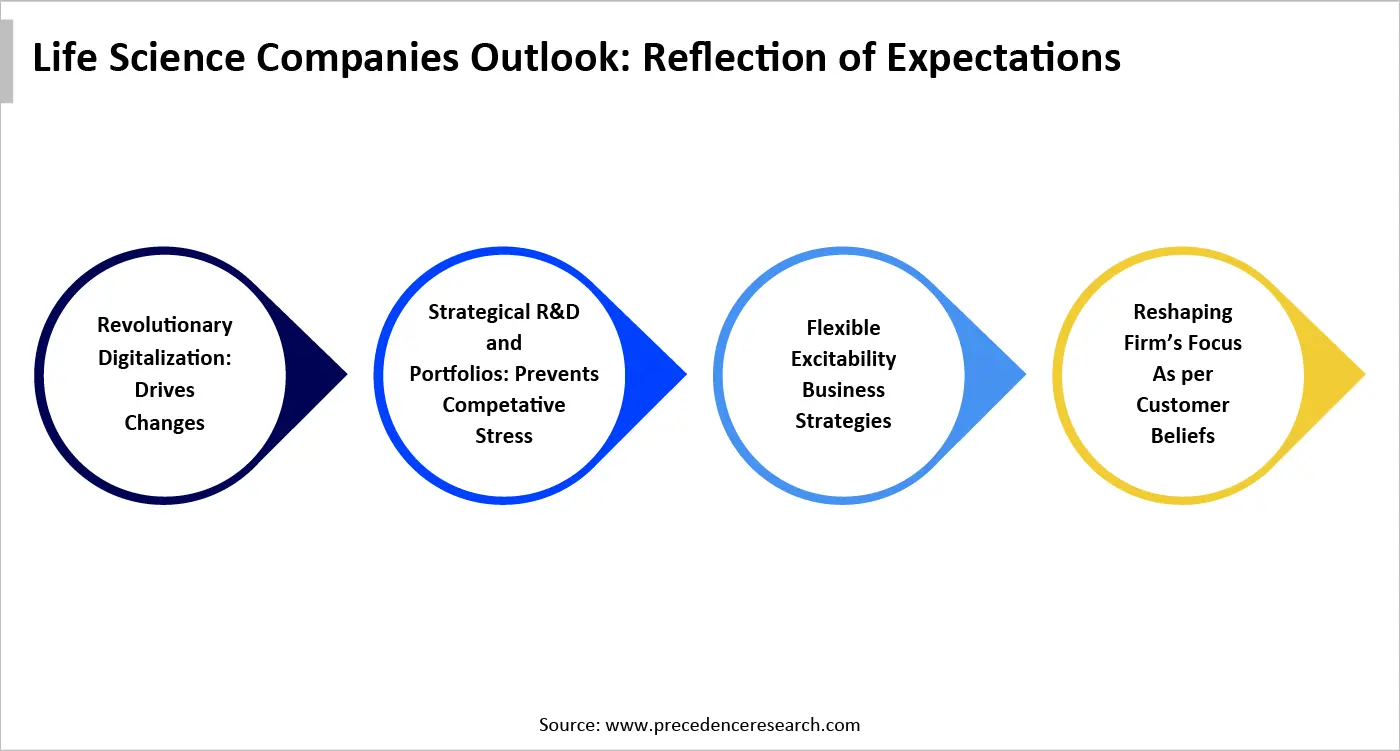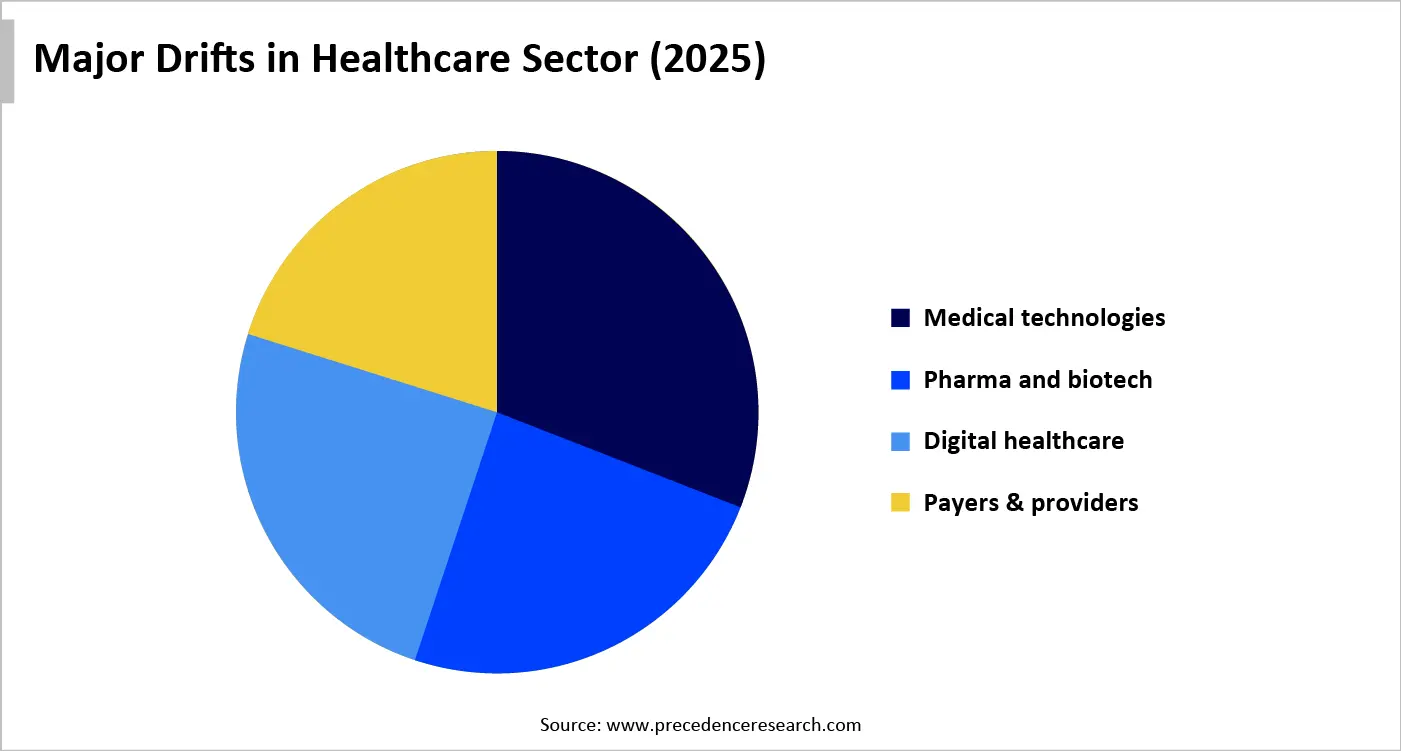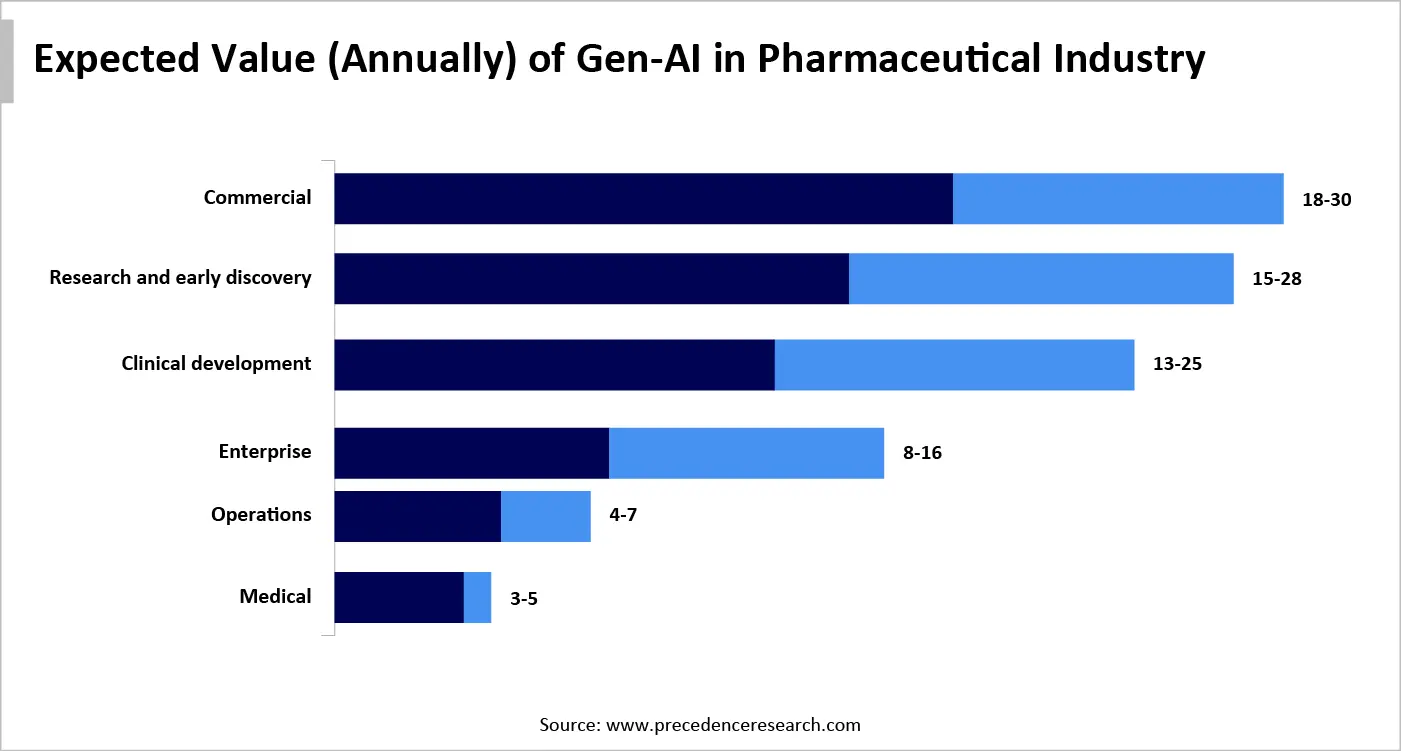Popular commitments among diverse life companies are to step into the massive venture capital market to strengthen their secure competitive position.
In the case of health innovations, the US healthcare system will reach $5.6 trillion in 2025, and it is estimated to reach about $8.6 trillion by 2033. This merger aims to enlarge production capacity while optimising supply chain resilience.
To be sure, as other industries emerge with consistent investment in capital projects, there will be a rise in competition for skilled labor, specialized equipment, materials, and other resources.
Life science companies are propelling their expansion with transformative advances in messenger RNA (mRNA), cell and gene therapies, and innovative large-scale drugs, like GLP-1s. Whereas exploring life science trends anticipates that in prospective projects, more than $150 billion will be new capital before 2030, this is the utmost statement by significant firms.
Certain firms are lagging in the pursuit of robust, integrated capabilities in project management, exceptional talent, and capital project conveyance in supporting them to derive maximum fruitful results. A lack of labour source and skilled minds for catering to various programs is hindering the future progress. According to Precedence Research's expertise, many executives from pharmaceutical, biotechnology, biosimilar, and medical device manufacturing companies, particularly around the United States, Europe (France, Germany, Switzerland, and the United Kingdom), and Asia (China and Japan), have studied their industrial issues and priorities, eventually in August and September 2024.

This will explore essential efforts in schedule-first project management; vital & robust strategic procurement and contracting models; enhanced commissioning, qualification, and validation (CQV) readiness; and comprehensive integrated delivery capability and talent strategy.

The possession of a greater margin of many life science companies look for speed up their marketing, which often concerns more than expense, which can result in losing revenue, minimising patient access, and infirm competitive reach. To put steps with these circumstances, organizations should replan regarding their delivery of capital projects, which will focus not only on lowering price but also on raising pace and reliability. Additionally, the leading companies are combining four capabilities that consistently propel speed, control, and sustainable value creation around their capital portfolios.
Emerging approach in scheduling, support tracking and fueling the respective progression. Complete embracement of this approach can constrict timelines, with increased value capture and accelerated ROI. Life sciences companies can merge many steps for implementing this approach.
On the completion of proper methods, these strategic procurements can minimizes spending with secured trustworthy delivery. This mainly needs a look at the entire price around the whole contract as against to just “buying cheapest.” Further leverages the protection of the schedule, optimizes capital effectiveness, allowing its implementation at the needed speed for advanced life science portfolios. Ongoing adoption of these progressive contract models becomes helpful for companies even in the generation of barriers.
It is an important requirement for firms to combine strong CQV with a specialized workstream for delivering safe, high-quality, compliant products. Furthermore, proper execution of CQV assists in increasing products’ time to market, raising ROI. Organizations can admire different ways for this timely delivery and high-quality CQV.
The presence of expert talent and inward potentials further results in sharper, quicker, and more-resilient production outputs. While companies can step through various actions for building smarter internal teams and capabilities to control the delivery process.
With varied geopolitical developments in the life science sector, companies’ CEOs are shifting from the classic belief that their in-house teams consisting of the expertise that necessitates navigation of the complex regulations impacting the evolution of novel customer-centric businesses. Above all, the life science industry is one of the strongly regulated domains, as stated by our organization analysis. While organizations have substantial regulatory and data workforce, which emphasizes confirming compliance, managing regulations, and mitigating patient information. The contribution of numerous experts during the disposal, CEOs of life science companies often expect that their firms will possess beneficial outcomes during the unveiling of groundbreaking business in the well-regulated surroundings.
As of now, 2025 is facing a major global economic drift, trade tariffs, most-favoured-nation costing regulations, supply chain susceptibility and regional pressures. This shows that approximately eight in ten life science firms are increasingly embracing gen AI. Furthermore, as per the Precedence Research study, it is investigated that around 75% to 85% of workflows in different pharmaceutical and medtech are leveraging advanced automated tasks.

The digital era of 2025 has experienced the wider use of gen AI across the complete business value chain by its capability to create myriad sources of data, both structured and unstructured, and develop bespoke visual, textual, and even molecular content. According to our study, it has been predicted that advanced technology could add $60 billion to $110 billion a year in economic value for the pharma and medical-product industries.

Many life science organizations are promoting advanced technologies in their variety of areas, including the healthcare sector. For this, research analysis is predicted to cross $750 billion by 2028. This will expand due to the greater adoption of innovative technologies, particularly telemedicine, wearable health devices, and remote patient monitoring. These approaches are helping to move towards the healthcare paradigm from reactive to proactive care. Along with the accelerating patient outcomes, this digitalization is resolving limitations among leading industries, including a lack of workforce, increasing spending, and interoperability concerns.

As per Precedence Research analysis, around 28% of fund managers are actively investing in life science business strategies to leverage acquisitions of complementary services, such as medical devices, diagnostics, and software as a service (SaaS). Similarly, many robust companies are inventing organizational conviction and allowing their teams to deploy sophisticated tools to ready their firms for action.
The revolutionary life science sector is expected to surge in reshaping R&D aspects, specifically among half of the medtech executives and 56% of the biopharma executives. This accelerates the requirement of transformative R&D approaches, along with product development policies in the upcoming 12 months. Approximately 40% of the entire survey boosts the significance of R&D productivity to address cross-retaining within the organizations.
Major life science companies, including pharma, biotech, medtech and healthcare domains, are surging into the adoption of CQV systems, AI innovations, proper scheduling management, and enhanced capital investment. These all dynamics can be upgraded with the inclusion of modular things, gen AI-based tools, and the launch of various productive approaches and COEs.

Aditi, Vice President at Precedence Research, brings over 15 years of expertise at the intersection of technology, innovation, and strategic market intelligence. A visionary leader, she excels in transforming complex data into actionable insights that empower businesses to thrive in dynamic markets. Her leadership combines analytical precision with forward-thinking strategy, driving measurable growth, competitive advantage, and lasting impact across industries.

Aman Singh with over 13 years of progressive expertise at the intersection of technology, innovation, and strategic market intelligence, Aman Singh stands as a leading authority in global research and consulting. Renowned for his ability to decode complex technological transformations, he provides forward-looking insights that drive strategic decision-making. At Precedence Research, Aman leads a global team of analysts, fostering a culture of research excellence, analytical precision, and visionary thinking.

Piyush Pawar brings over a decade of experience as Senior Manager, Sales & Business Growth, acting as the essential liaison between clients and our research authors. He translates sophisticated insights into practical strategies, ensuring client objectives are met with precision. Piyush’s expertise in market dynamics, relationship management, and strategic execution enables organizations to leverage intelligence effectively, achieving operational excellence, innovation, and sustained growth.

Popular commitments among diverse life companies are to step into the massive venture capital market to strengthen their...
18 Nov 2025
Viral vector gene therapies are gaining traction, with the rise in genetic and rare disorders, recent FDA approvals, and...
14 Nov 2025
Among Gen Z and millennials, wellness is an everyday ritual, not just an occasional activity. The expansion of wellness...
13 Nov 2025